The world-famous grave at Sedlec, just outside Kutná Hora, is a medieval Gothic church that has stood for centuries on the remains of 40,000 people, serving as a solemn reminder of the transience of human life and the reality of death.
Sedlec Ossuary (also known as Kostnice Ossuary Beinhaus) in the Czech
Republic welcomes you with open arms: the ossuary, located near Kutná
Hora, is a unique place of the world's most gruesome art and is
undoubtedly a fascinating destination not to be missed. From the
outside, the Gothic church in Sedlec, near the picturesque Czech
Republic city of Kutná Hora, appears to be very ordinary.
Still, go down to the basement to find something terrifying: tens of thousands of human bones have been bleached, then ornately carved, and now cover everything in sight. According to legend, a local abbot traveled to Jerusalem in the 13th century and returned with consecrated soil to distribute throughout the church graveyard. As word spread, the Sedlec cemetery became one of the most popular places to be buried.
Nearly 40,000 victims were added to the plots as the plague ravaged Europe in the 14th century. The Crusades brought 10,000 casualties to this cemetery, not to mention other graves that occurred over time. The Bone Church's history begins in 1278 when the Abbot of the Sedlec Monastery (Abbot Henry) returned on a pilgrimage to the Lord's Grave in Jerusalem with a handful of soil. He distributed this "holy earth" over the Sedlec cemetery, establishing its reputation as one of the most sought-after burial grounds in Bohemia and the surrounding countries.
Many people from all over Europe wanted to bury their loved ones there, in that small corner of the Holy Land, because they believed they were providing them with eternal redemption. There were over 30,000 people, and it didn't take long before there wasn't enough space for everyone to lay in peace. Many dead were collected in the cemetery over the years, owing to two major tragedies that rocked the Czech Republic: the black plague in 1300 and the Hussite wars in 1400. An ossuary was created around 1400 and placed in a crypt inside the new church built in Sedlec's cemetery: "the chapel of all saints."
The friars gathered the oldest bones in the church storage in 1511 to make room for the new ones. In 1870, a local woodcarver named Frantiek Rint, who worked for the Duke of Schwarzenberg, employed the stacked bones to make strange and gruesome ornaments. He made numerous sculptures using the remains of the skeletons, which numbered around 40,000, and decorated the walls and vault.
The artist designed the beautiful chandelier in the Bone Church and the unique Schwarzenberg coat of arms, which includes a raven pecking at a severed skull made of human bone. Rint was in charge of whitening all of the bones in the ossuary to give it a consistent appearance. His signature, naturally, in bone, his favorite medium, is still on the wall today.
Written by Joshua Marasigan, New Age Hub
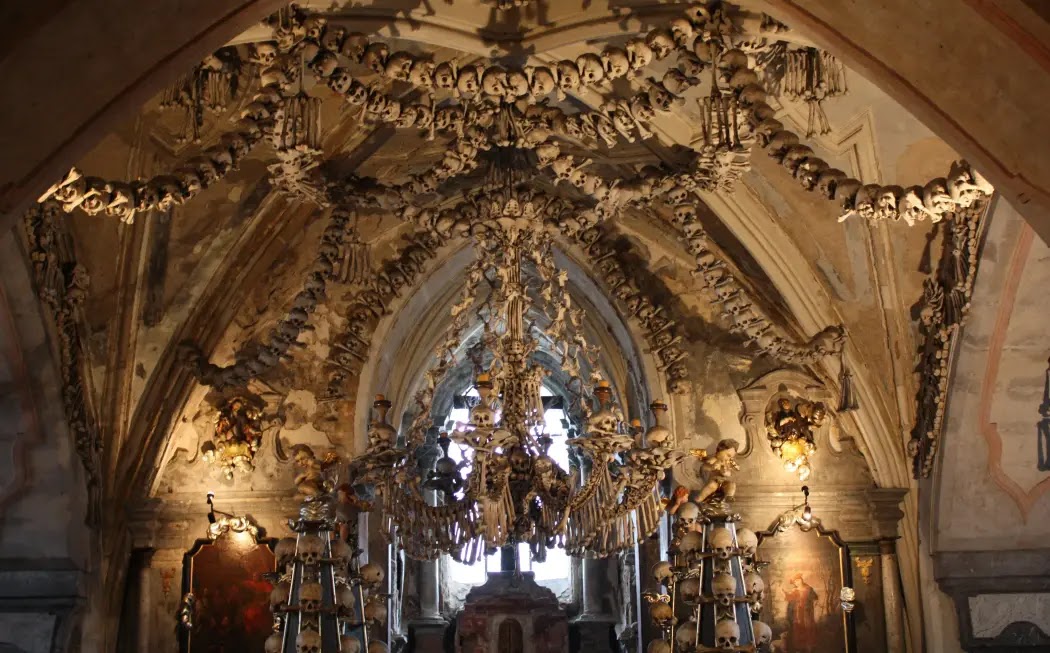
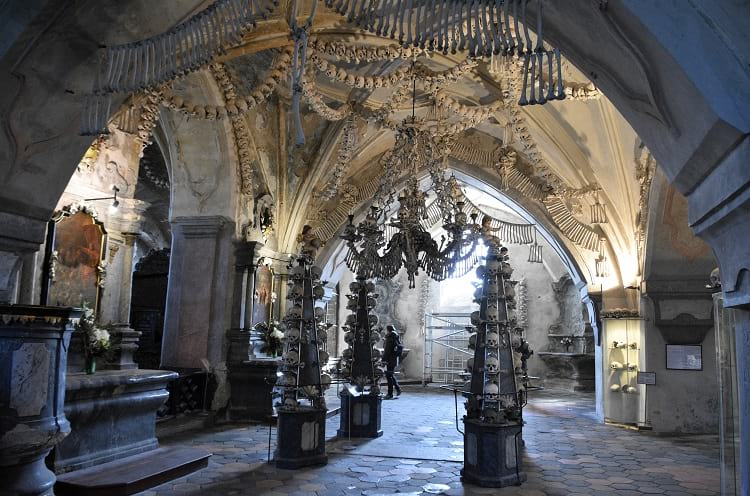
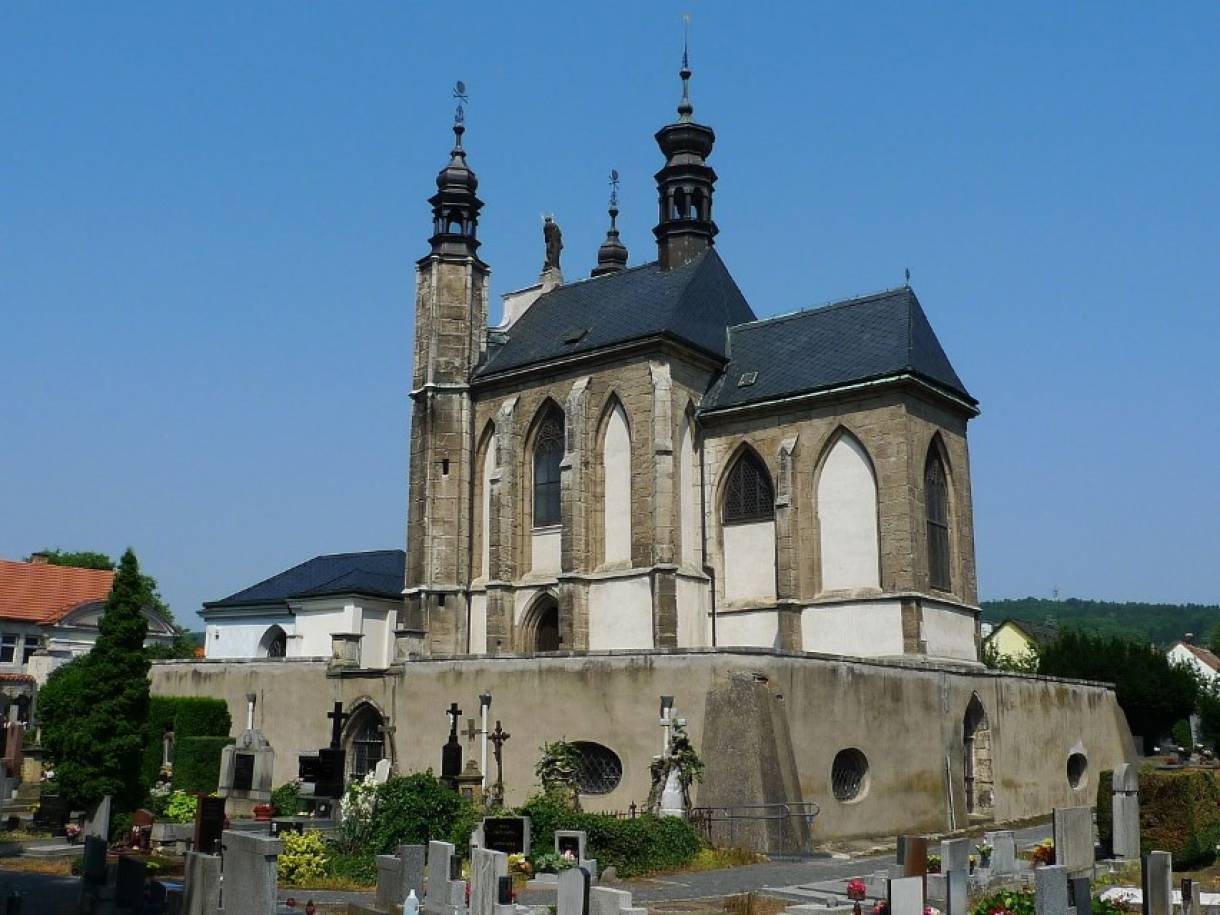
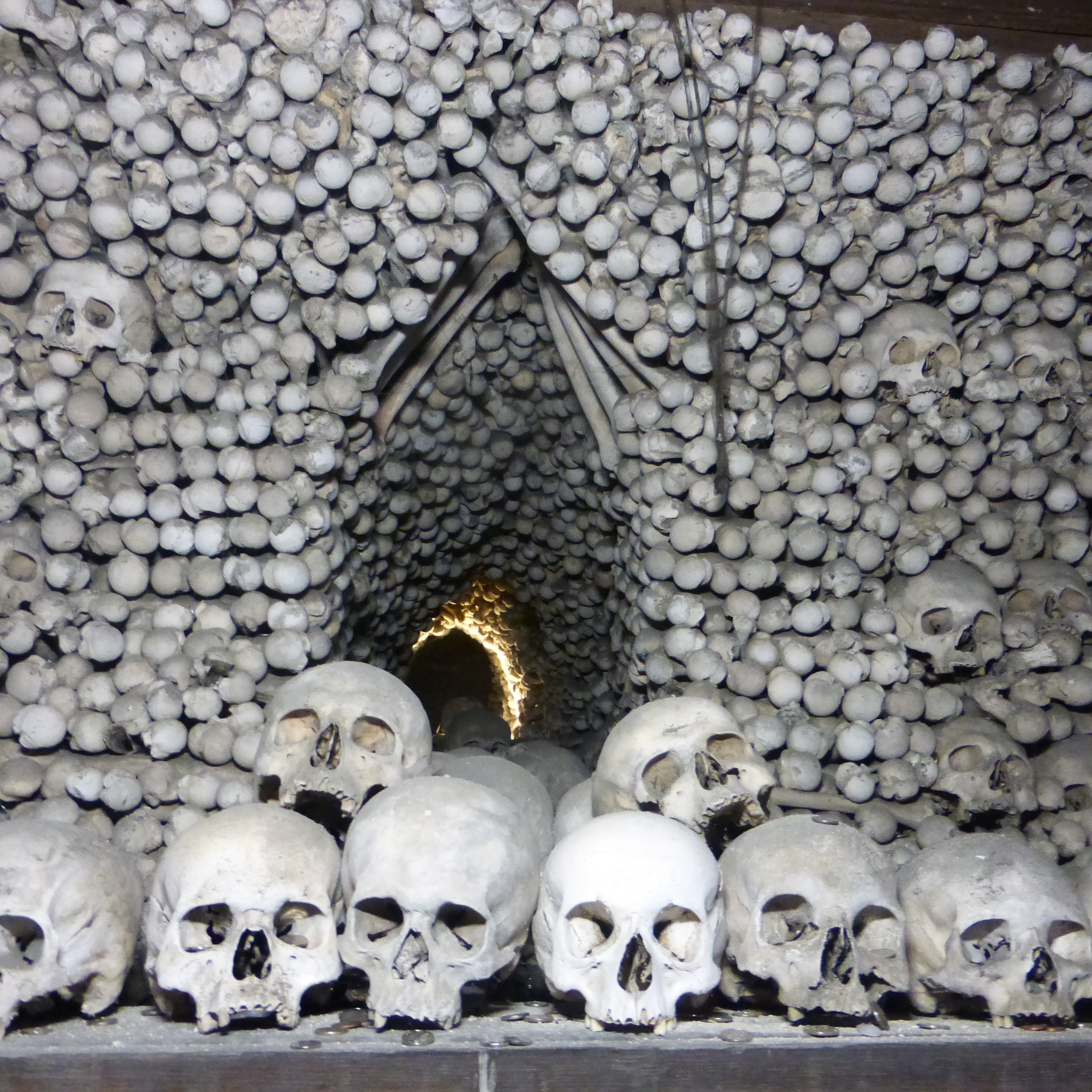
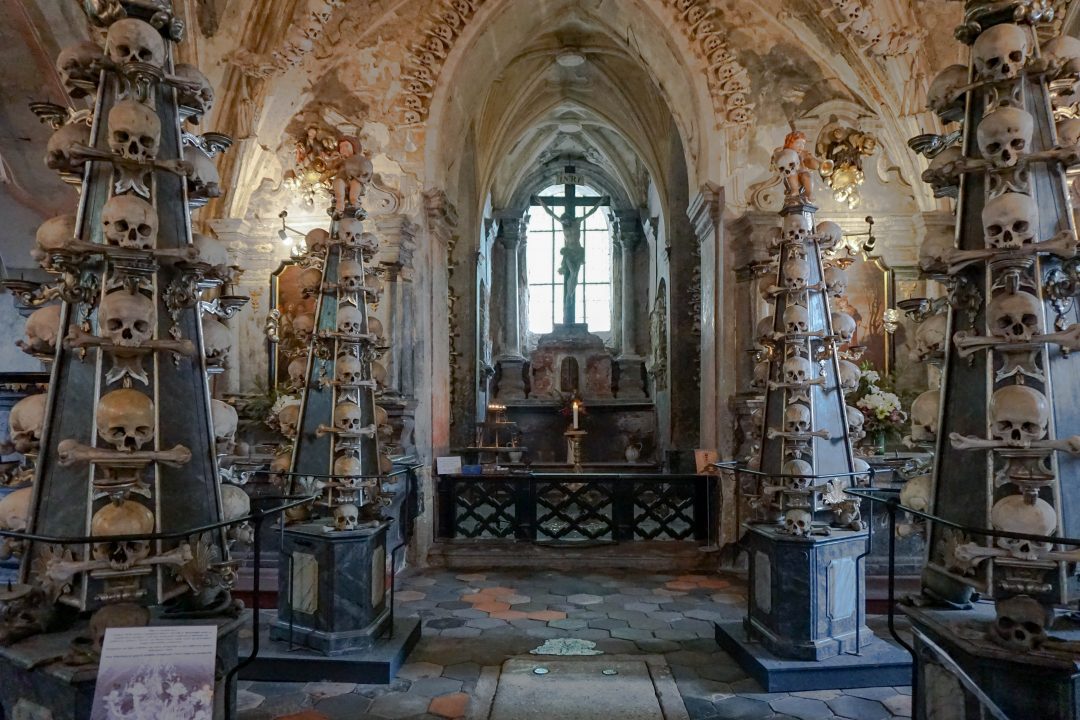






















No comments:
Post a Comment